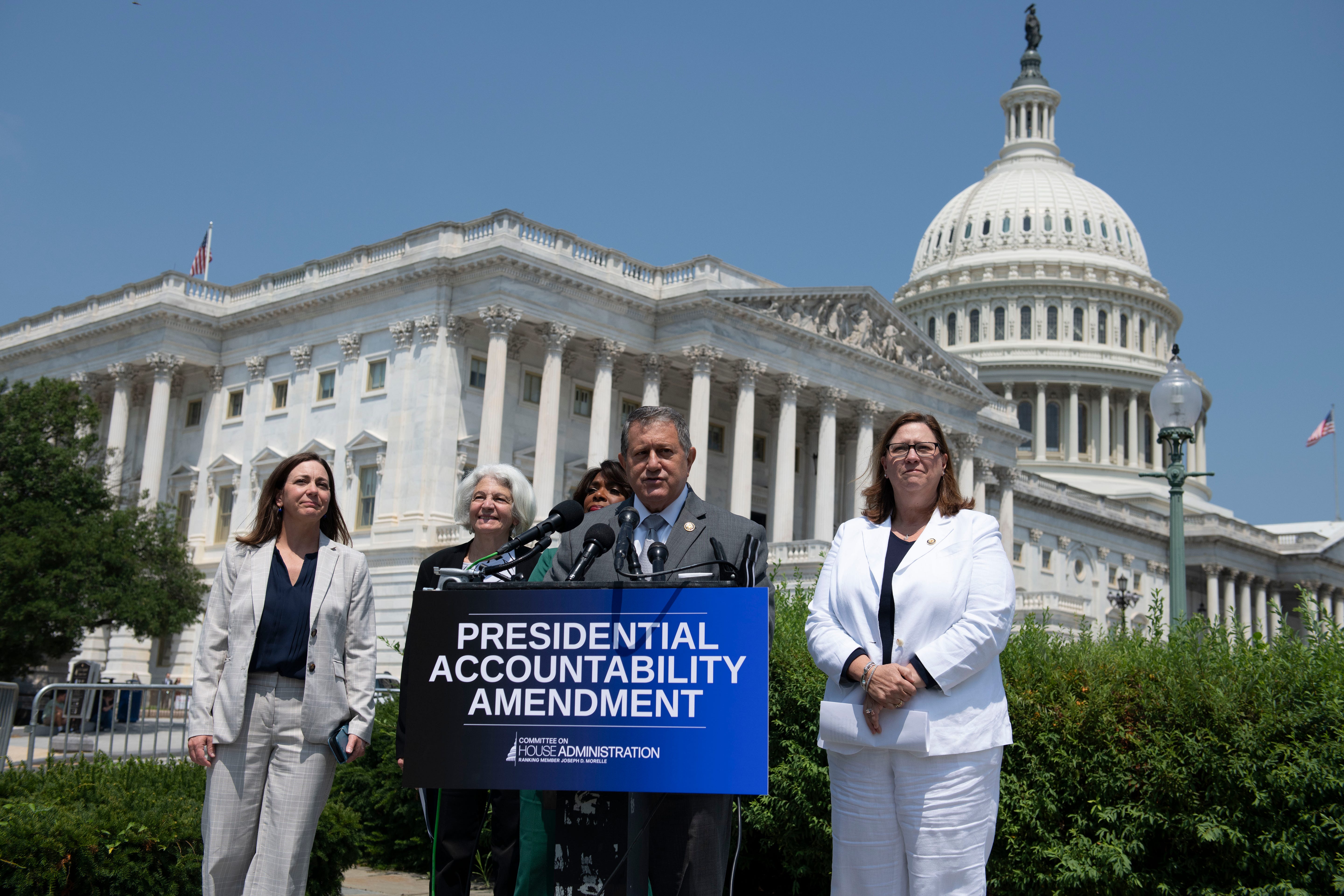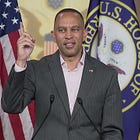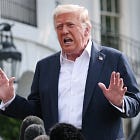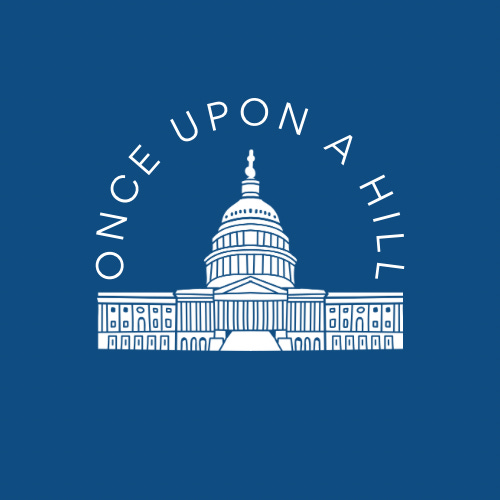Morelle revives constitutional amendment to curb presidential immunity
A year-plus after SCOTUS ruled presidents are immune from prosecution for official acts, a top House Dem is pushing an amendment to reassert limits on executive power—even if it goes nowhere fast.

More than a year after the Supreme Court’s landmark ruling on presidential immunity, and nearly a decade into Donald Trump’s grip on American politics, Rep. Joe Morelle is making another push to claw back the balance of powers.
The New York Democrat and ranking member of the House Administration Committee reintroduced a constitutional amendment on Tuesday afternoon that would bar presidents from pardoning themselves and eliminate immunity protections for federal officials, including the president, for criminal acts committed in office.
The decision was handed down before Trump was reelected, before Republicans flipped the Senate and before GOP lawmakers started hugging the president as tightly as they are now, all of which makes progress on Morelle’s proposal improbable while Trump is in office.
However, Morelle says the amendment, which boasts more than 130 cosponsors, all of whom are Democrats, would also apply to Democratic presidents—a fact he hopes will encourage Republicans to take a long view toward democracy reform, even if few are listening at the moment.
“From this point forward, all presidents, whether Democrats or Republicans, will have the ability to act outside of the law and be free from accountability,” Morelle told me. “And so what I’m hopeful is they’ll take the longer view and they won’t be so concerned about always protecting President Trump, which it seems like they’re devoted and dedicated to doing so.”
Morelle added that he plans to write a letter to every House Republican, urging them to sign on and expressed optimism that the resolution will be introduced in the Senate.
Morelle was joined by fellow House Administration Democrats Terri Sewell of Alabama and Julie Johnson of Texas, who framed the amendment as part of a broader fight to protect democratic institutions in places where they say that fight is especially urgent.
“At the end of the day, we all know and have had our civics lesson that there are three co-equal branches of government, and that one of those branches cannot usurp the power of the other,“ Sewell said. “Now more than ever, we must take action to correct this injustice and restore the ideals upon which our founding fathers founded this nation.”
Johnson warned that if the president can violate their oath, target their enemies or trample the rights of the people with impunity, then the Constitution and its laws are meaningless.
“[The amendment] says that the Constitution that gives the president its power also holds them accountable when they abuse it,” she said. “We have a duty to defend his principle, and if we fail, we invite future presidents to test the limits of lawlessness. And if we stand firm, we protect the very soul of this republic.”
The Supreme Court’s July 2024 ruling in Trump v. United States marked a historic expansion of executive power, holding for the first time that a former president is immune from criminal prosecution for official acts taken while in office.
The 6–3 decision, authored by Chief Justice John Roberts, drew a sharp distinction between official and unofficial conduct, shielding Trump from federal charges related to his efforts to overturn the 2020 election and narrowing the scope of accountability for future presidents.
The case stemmed from former Special Counsel Jack Smith’s federal indictment of Trump in 2023, which charged the former president with conspiring to obstruct the certification of the election results and defrauding the United States. Trump’s legal team argued that his actions fell within the core functions of the presidency and were therefore immune from prosecution. After lower courts rejected that argument, the Supreme Court agreed to hear the case, setting up a consequential showdown over the limits of presidential power.
By the time the Court ruled, Trump was already the presumptive Republican nominee and campaigning on promises of so-called retribution against political opponents and a sweeping overhaul of the federal government. The decision effectively short-circuited Smith’s prosecution, making it nearly impossible to bring Trump to trial before the November election. He went on to win a second term.
The ruling provoked fierce backlash from legal scholars, Justice Department officials, and Democratic lawmakers, who warned that it placed the president above the law and set a dangerous precedent for future abuses of power. While the majority emphasized that not every presidential act would be protected, the practical effect of the ruling was to grant broad immunity for any conduct deemed official, a category that remains largely undefined.
In the year since the landmark ruling, the legal and political consequences have been swift and far-reaching. With the threat of prosecution for official acts effectively off the table, Trump has returned to the presidency with fewer checks than any other modern occupant of the office. The ruling has granted him extraordinary leeway to test and often stretch the boundaries of executive power.
Within weeks of his second inauguration, Trump leaned into the ruling’s logic, asserting immunity in response to new legal challenges and framing his authority as near-absolute when acting in an official capacity. Senior administration officials and allies in Congress have echoed the decision’s language to defend aggressive uses of federal power, including politically motivated firings, controversial agency directives and sweeping policy rollbacks with little public process.
Some legal scholars and former officials argue that the ruling has begun to reshape the legal landscape in subtle but significant ways. Prosecutors may be more cautious when weighing investigations that could be construed as targeting a president’s official conduct. Congressional oversight efforts, already hamstrung by partisan gridlock, now face a more assertive use of executive privilege. And critics warn that the Court’s decision has edged the country toward a two-tiered system of justice with one in which presidents are shielded from the consequences of actions that would be unlawful for anyone else so long as they are cast as official.
Politically, the decision has further emboldened Trump’s claims that any effort to restrain him through courts, Congress, or the press is illegitimate. He has cast the ruling as a personal vindication and a license to implement his second-term agenda without compromise or fear of reprisal. And while many Democrats and some former Republican officials continue to raise alarms, the institutional tools to meaningfully challenge the president’s actions have grown weaker since the Court’s intervention.
Morelle’s proposed amendment contains three sections, each aimed at codifying presidential accountability into the Constitution and directly responding to the immunity ruling.
The first section makes clear that no federal official— including the president, vice president or members of Congress—can claim immunity from criminal prosecution for actions taken in their official capacity. It carves out only one exception: the protections granted to legislators under the Constitution’s Speech or Debate Clause.
The second section explicitly prohibits self-pardons, stating that the president does not have the power to pardon themselves for any offense against the United States. The Supreme Court left this question unanswered in its 2024 decision.
The third section affirms that the amendment would be self-executing upon ratification, while also authorizing Congress to pass any necessary legislation to enforce it.
Though symbolic in the current political climate, the amendment reflects a growing urgency among some Democrats to reinforce the principle that no one, including the president, is above the law.
It’s intentionally difficult and exceedingly rare to amend the U.S. Constitution. A proposed amendment must first receive a two-thirds majority in both the House and the Senate to be adopted. From there, it must be ratified by three-fourths of state legislatures. Napkin math says that means at least 38 states must approve it.
Only 27 amendments have been ratified in American history, with the most recent—lowering the voting age to 18—adopted in 1971. Hundreds of amendments are introduced in Congress each session, but the vast majority never receive a hearing or vote.
Morelle’s proposal falls into a long tradition of amendments introduced to signal a broader set of principles or future ambitions, not for immediate passage. In that sense, its primary function may be to keep the question of presidential accountability alive—even if the constitutional pathway is blocked for now.




